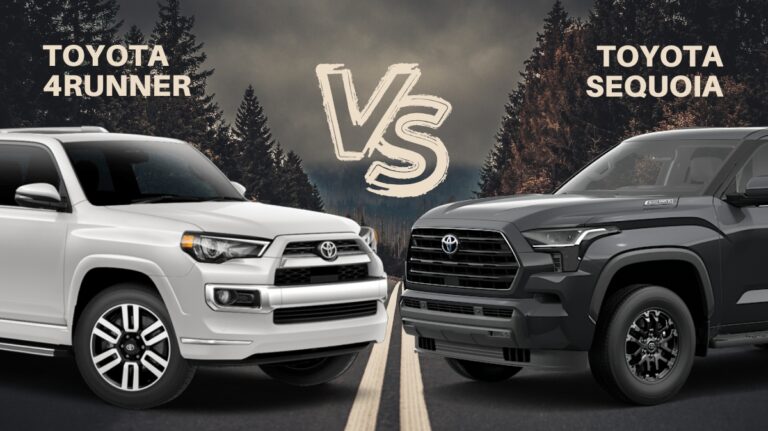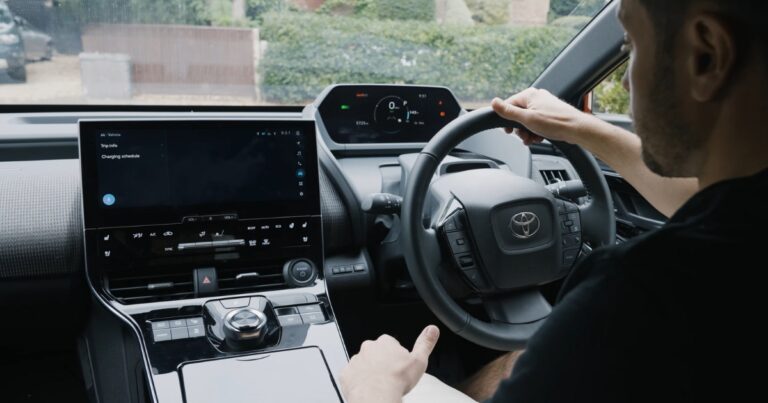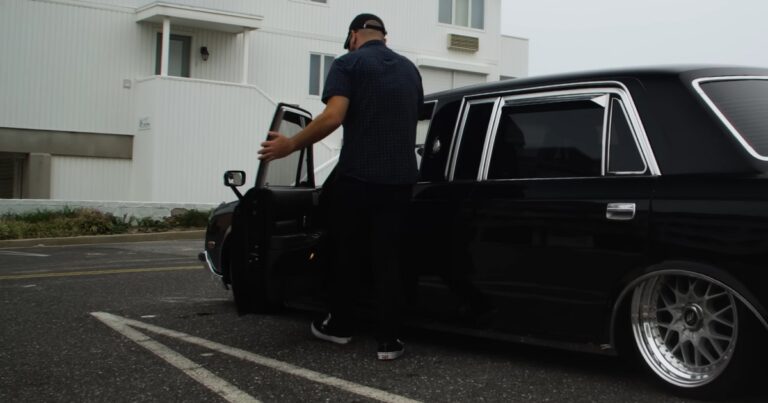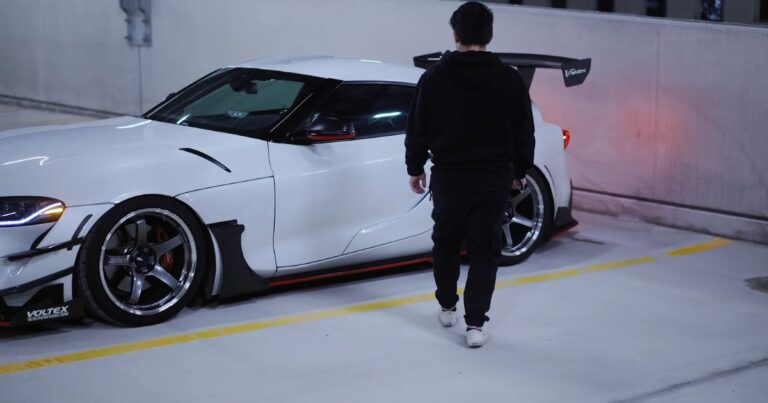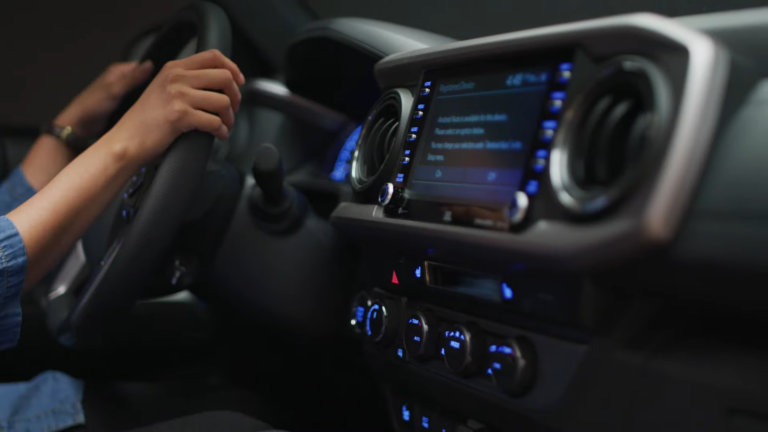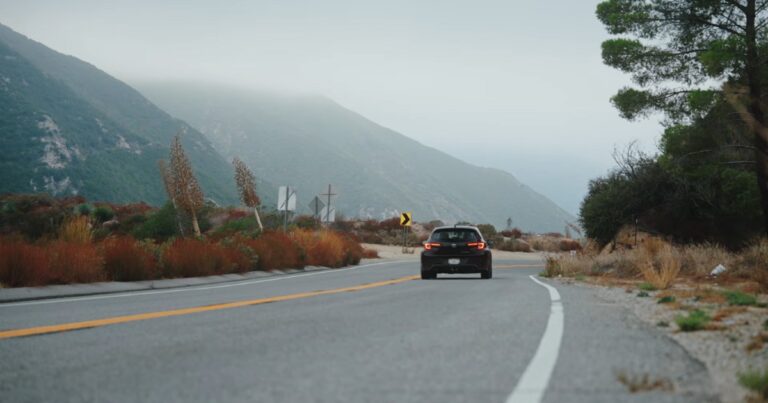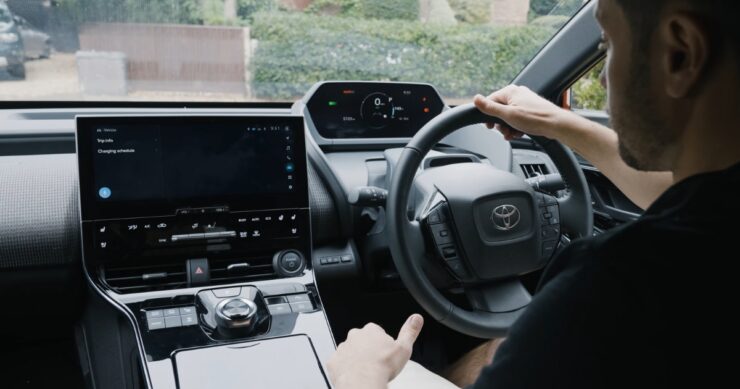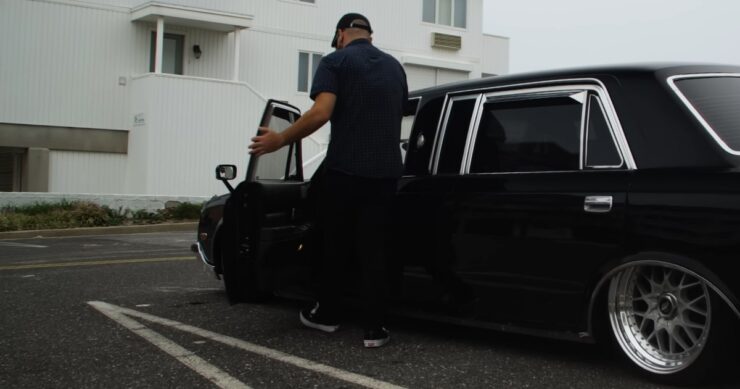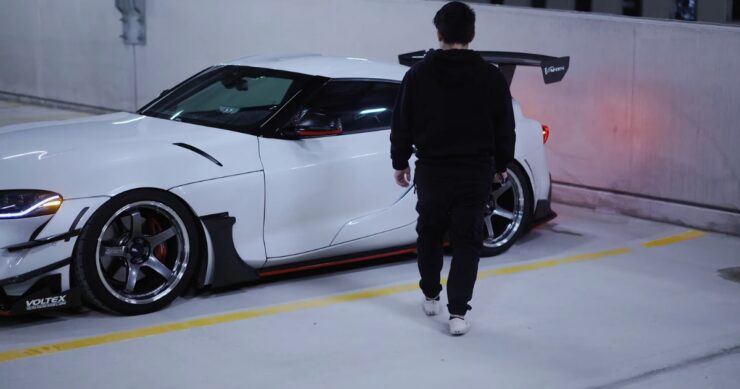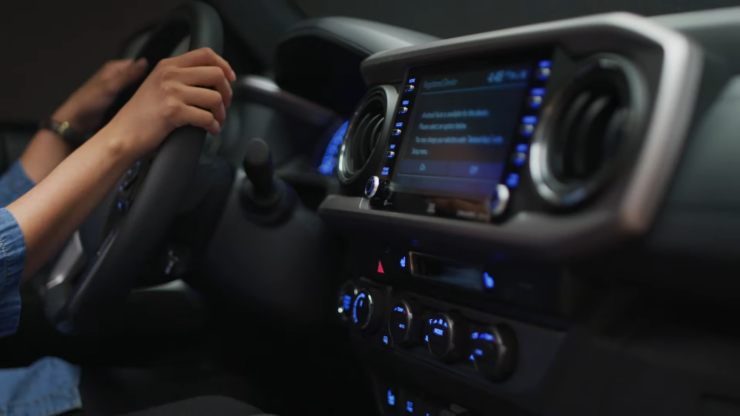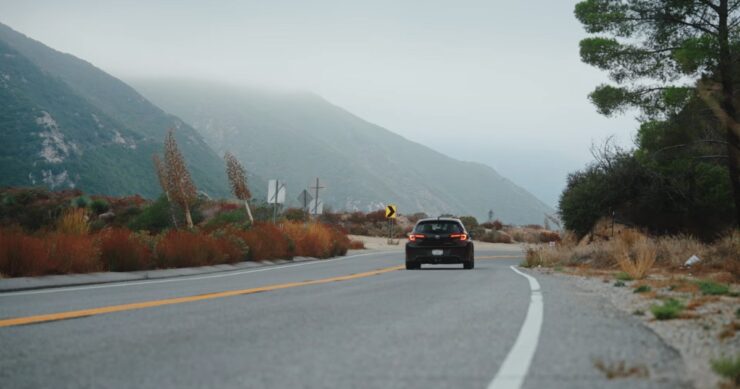The Toyota Sequoia vs 4runner comparison gives you a better understanding of these two vehicles in terms of performance, capability, and other vital features.
If you are attracted to both the Toyota Sequoia and 4runner, you do not know how to choose the ideal or exact design for you. This guide has all the information and details you need.
In the end, you will know which vehicle offers the best features that meet your needs, making it easier for you to make a sound purchase decision for your driving needs.
History of Toyota Sequoia
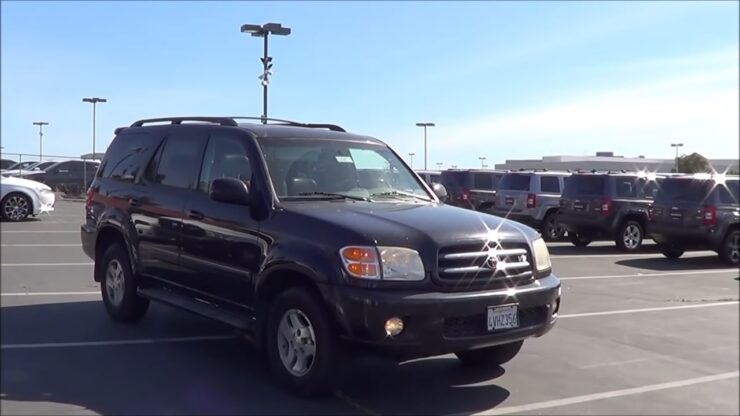
The first Toyota Sequoia was introduced into the market in 2001. The second generation was released 7 years later (2008) with massive improvements, especially with the infotainment system upgrades, and has remained today.
Toyota Sequoia Generation Models with Configuration
1st generation Toyota Sequoia
Upon its release in 2001, this vehicle comes with a 4.7L V8 engine installed in it. The engine is paired with a 4-speed automatic transmission and produces 240hp and 315 lb-ft of torque.
This model runs on gas, with a fuel economy of 12 miles per gallon while driving in the city and about 16 miles per gallon on the highway.
This 1st generation Toyota Sequoia offered excellent for off-road adventures or trips. It had an impressive towing capacity of 6,500 pounds, and the ground clearance was about 9.5 inches.
Key Features
- 7L V8 engine
- 240hp and 315 lb-ft torque
- 4-speed automatic transmission
- 6,500 pounds towing capacity
- 5-inch clearance
- Accommodates 8 people conveniently
2nd generation Toyota Sequoia
In 2008, the second generation was released—this time around, with a more powerful engine. The 2nd generation had a 5.7L V8 engine, with 381hp and 401 lb-ft torque. Instead of the 4-speed automatic transmission that the 1st generation engine was paired with, the 2nd generation came with a 6-speed automatic transmission.
This model also runs on gas, and the fuel usage is almost similar to the first generation. 14 miles per gallon when you drive in the city and 19 miles per gallon on the highway.
Also, Sequoia significantly improved the towing capacity as it extends to 7,400 pounds. Also, the 2nd generation came with an advanced entertainment/audio system, which had fantastic features.
Key Features
- 7L V8 engine
- 381hp and 401 lb-ft torque
- 7,400 towing capacity
- 6-speed automatic transmission
- Accommodates 8 people conveniently
If you’re interested in related topics, we’ve also covered them extensively in our blog.
History of Toyota 4runner
The first Toyota 4runner was introduced in 1984 (popularly known as the first generation). Although it shares a similar appearance with the popular Toyota Hilux Pickup, it was equipped with improved features, making it a better design.
Over the years (from 1984 till now), 5 generations of the Toyota 4runner have been introduced into the market. Toyota introduced the 5th generation over a decade ago, and it is rated highly by SUVs enthusiasts around the world.
Toyota 4runner Generation Models with Configuration
1st generation Toyota 4runner
The first generation of the Toyota 4runner was introduced into the market in 1984. It was majorly seen or accepted as an advanced Hilux pickup truck. This model was originally designed to run on a 2.4L 22RE I-4 engine, offering 100hp in the process.
After a series of complaints about how slow the vehicle was, in 1986, Toyota came up with the turbocharged version of the 2.4L 22RE I-4 engine. However, the production only lasted for 2 years. The turbocharged engine offered 35 additional horsepower more than the original engine, with 175 lb-ft torque. While this was still slow, it delivered a better performance to drive on the highway comfortably.
In 1987, the 3.0-liter V-6 engine was released, offering 150hp and a torque of 180 lb-ft.
Key features
- Available in 2 different engine types
- A retractable windshield in the rear tailgate
- The early models are perfect for off-road adventures
- Front independent suspension
- The rear leaf springs
2nd generation Toyota 4runner
In 1990, Toyota introduced the 2nd generation of the Toyota 4runner. One notable feature that sets it apart from the 1st generation was its unique construction and body. It comes with rear doors, ensuring passengers are conveniently and comfortably accommodated.
The 2nd generation also used independent suspension and came with coils instead of the rear leaf springs in the first generation. It runs on the standard 2.4-liter I-4 engine, offering 115hp. However, you could upgrade the engine to a 3.0-liter V-6 for improved horsepower (150hp) and torque (180 lb-ft).
Key Features
- Rear doors
- Standard 2.4-liter I-4 engine, upgradable to 3.0-liter V-6
- 115hp & 150hp
- Front independent suspension
- Robust and solid performance
- Off-road reliable
3rd generation Toyota 4runner
When the 3rd Generation was released in 1996, it detached entirely from the initial association/connection with the Hilux pickup truck. This time around, with a different body and chassis to reinforce its unique identity.
Unlike the previous generations, this model comes with 4 doors. This further reaffirms its position in the SUV market. The standard engine is 2.7L I-4, which can be upgraded to a 3.4-liter V-6.
Overall, the 3rd generation offers a smoother and better body styling, lengthened wheelbase, and improved suspension. The interior was also significantly upgraded for greater comfort. The off-road capability was another impressive feature that reinforces its reliability.
Key Features
- 7L I-4 & 3.4-liter V6
- Improved space and ergonomics
- Impressive off-road capability
- Unique construction and body styling
- 4 doors
4th generation Toyota 4runner
In 2003, the 4th generation of the 4runner was released as the build/upgrade towards a more appealing and road-oriented 4runner SUV design continued.
The exterior styling was totally different from the previous generations. It comes well-rounded and with a proper car appearance. The interior was also greatly improved, as it became more accommodating and spacious.
The 4th generation 4runner came with a standard 4.0L V6, and there was also the 4.7L V8 optional engine. The 4.0L V6 engine was a perfect choice for SUV enthusiasts who were more fascinated or passionate about off-road trips. The 4.7L V8 engine was an ideal choice for individuals involved in regular towing and heavy lifting.
Key features
- 0L V6 & 4.7L V8 engines
- Improved exterior styling
- More spacious and accommodating interior
- 4 doors
- Excellent off-road and towing capability
5th generation Toyota 4runner
This is the current generation of the Toyota 4runner. The 5th generation was released in 2009, and it was designed to offer better/greater comfort, performance, and capability. This 4runner is powered with a 4.0L V6 engine and produces 270hp and 278 lb-ft of torque.
The 5th generation has sturdy body construction for excellent off-road and towing capability. This model is more luxurious, and it can conveniently accommodate 5 people at once.
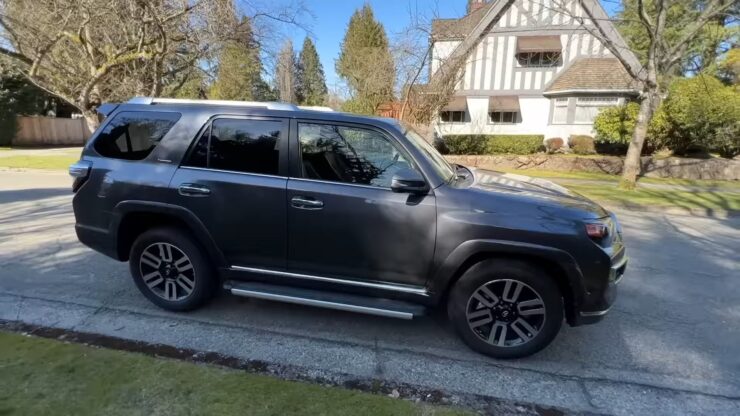
Car owners can easily customize the interior to deliver on their audio system preference using supported accessories. The improved tires, shocks, skid plates, springs, and sizeable storage space enhances the overall drive experience.
Key Features
- 0L V6 engine
- 270hp and 278 lb-ft torque
- 5-Speed Automatic
- Accommodates 5 people, upgradable to 7
- Off-road and towing capability
- Advanced infotainment system
To learn more about the Toyota Entune system, please refer to our previous article on the subject.
Comparative Differences Between 4runner & Sequoia – Toyota Sequoia vs 4runner
Fourth-generation 4runner vs the first-generation Sequoia
Engine
The 4th generation 4runner comes in two different engine types. The 4.0L V6 engine (standard engine) was paired with 4-speed automatic transmission, while the 4.7L V8 (optional engine) was paired with 5-speed automatic transmission. The standard engine produces 345hp and 283 lb-ft of torque, and the V8 engine produces 235hp and 320 lb-ft of torque.
The 1st generation Sequoia comes with the 4.7L V8 engine, paired with the 4-speed automatic transmission. The engine produces 240hp and 315 lb-ft of torque.
Towing & off-road capacity
The two models were designed to offer an unforgettable off-road experience. The 4th generation 4runneer provides a towing capacity of 7,200 pounds.
The 1st generation Sequoia has a towing capacity of 6,500 pounds. These two SUVs are some of the most powerful vehicles you will find on the market.
Fuel economy
The 4th generation 4runner uses the regular gasoline with a fuel economy of 14 miles per gallon when you drive in the city and 17 miles per gallon on the highway. The 1st generation Sequoia has a fuel economy of 12 miles per gallon when you drive across the city and about 16 miles per gallon when you drive on the highway.
Seat capacity
The 4th generation 4runner can comfortably accommodate 5 people as the standard, expandable to 7. The 1st generation Sequoia can adequately accommodate 8 people.
Fifth-generation 4runner vs second-generation Sequoia
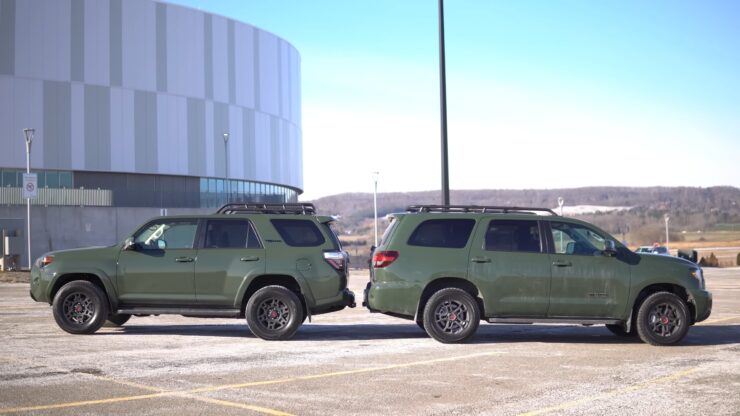
Engine
The Toyota 4runner comes with a solid 4.0L V6 engine, with 270hp and 278 lb-ft torque, while the Toyota Sequoia is powered by a 5.7L V8 engine, with 381hp, the torque is 401 lb-ft.
Towing & off-road capability
The 5th generation Toyota 4runner has a towing capacity of 5000 pounds. In addition, the off-road performance is excellent.
On the other hand, Toyota Sequoia has a more impressive towing capacity, 2400 pounds greater (7400 pounds) than the Toyota 4runner offers. The off-road performance is also remarkable.
Fuel economy
The 5th generation 4runner uses the regular gasoline with a fuel economy of 17 miles per gallon when you drive in the city and 20 miles per gallon on the highway. The 2nd generation Sequoia also uses gasoline with a fuel economy of 14 miles per gallon when you drive in the city and about 19 miles per gallon on the highway.
Seat capacity
The 5th generation 4runner can accommodate 5 people, and it is expandable to 7. The 2nd generation Sequoia can accommodate up to 8 people comfortably.
2016 Toyota Sequoia vs. 2016 Toyota 4Runner
Size
The 2016 Toyota Sequoia is longer than the 2016 Toyota 4runner.
Passenger and cargo capacity
The 2016 Sequoia can comfortably accommodate up to 8 passengers. The maximum cargo/storage capacity is 120 cubic feet. The 2016 Toyota 4runner can comfortably seat between 5 people, and the maximum cargo/storage capacity is 89 cubic feet.
Towing capacity & horsepower
The 2016 Toyota Sequoia engine delivers 381hp, and it has a towing capacity of 7400 pounds. The Toyota 4runner engine produces 270hp and with a towing capacity of 5000 pounds.
Fuel efficiency
The Toyota Sequoia fuel economy is estimated at 13 miles per gallon when you drive in the city and 17 miles per gallon on the highway. The Toyota 4runner fuel economy is estimated at 17 miles per gallon in the city and 22 miles per gallon on the highway.
2024 Toyota Sequoia vs. 2024 Toyota 4Runner
Size
The 2024 Toyota Sequoia is longer.
Passenger and cargo capacity
The 2024 Toyota Sequoia can accommodate up to 8 people and has a maximum cargo/storage capacity of 120.1 cubic feet. The 2024 Toyota Runner can accommodate 5 people and has a maximum cargo/storage capacity of 89.7 cubic feet.
Infotainment system
Both SUVs are equipped with excellent and improved multimedia/entertainment systems. The stereo display is large, touchscreen, and offers exceptional visuals. You can as well synchronize your smartphone with your stereo.
Fuel efficiency
The 2024 Toyota Sequoia fuel efficiency is estimated at 17 miles per gallon on the highway, while the Toyota 4runner fuel efficiency stands at 21 miles per gallon.
Towing capacity & horsepower
The 2024 Toyota Sequoia engine delivers 381hp, and it has a towing capacity of 7400 pounds. The 2024 Toyota 4runner engine produces 270hp and with a towing capacity of 5000 pounds.
2024 Toyota Sequoia vs. 2024 Toyota 4Runner
Towing capacity & horsepower
The 2024 Toyota Sequoia uses the 5.7L V8 engine, which provides 381hp and a towing capacity of 7400 pounds. The 2024 Toyota 4runner uses the 4.0L V6 engine, which delivers 270hp and a towing capacity of 5000 pounds.
Fuel efficiency
The 2024 Toyota Sequoia fuel efficiency is estimated at 13 miles per gallon in the city and 17 on the highway. The Toyota 4runner fuel efficiency stands at 16 miles per gallon in the city and 19 on the highway.
Interior & Exterior dimension and size
The 2024 Toyota Sequoia is bigger and longer than the 2024 Toyota 4runner. Also, Toyota Sequoia provides better interior space and comfortably accommodates 8 passengers. The 2024 Toyota 4runner accommodates 5 passengers comfortably.
Toyota 4runner vs Highlander vs Sequoia
Driving experience
4runner and Sequoia offer great road and off-road adventures. The Toyota Highlander comes with limited off-road features and is well-suited for everyday operation/movement around the city and on the highway.
Size
The Toyota Sequoia is the longest of these three SUVs, while the Toyota 4runner is the shortest.
Towing capacity
The Toyota Sequoia doesn’t only have a more efficient towing capacity. The cargo room is also more sufficient than what the other two SUVs offer.
The Common Difference Between 4runner & Sequoia
While both SUVs are relatively comparable in the overall design, the 4runner is noticeably shorter than the Sequoia.
Which one to Choose? 4runner or Sequoia
Both SUVs are excellent designs. However, one delivers better results and performances in some aspects than the other. To find the perfect model for your driving needs, we recommend that you test drive both the 4runner and Sequoia and then choose the one that meets/suits your expectations.
FAQs
Which of these SUVs offer a better off-road experience?
The Toyota 4Runner is generally considered to offer a better off-road experience compared to the Toyota Sequoia. This is because the 4Runner has a body-on-frame construction, which is better suited for handling rugged terrain, while the Sequoia has a unibody construction that is more suitable for on-road driving.
The 4Runner also comes with features such as a locking rear differential, an available Kinetic Dynamic Suspension System (KDSS) that adjusts the suspension to maximize traction, and an optional Multi-Terrain Select system that allows the driver to adjust the vehicle’s performance to different types of terrain. These features make the 4Runner a great choice for off-road enthusiasts.
While the Sequoia is not specifically designed for off-road driving, it still has some features that can make it capable of handling light off-road conditions, such as a high ground clearance, an available Multi-Mode 4WD system, and skid plates to protect the undercarriage. However, if off-road performance is a top priority, the 4Runner is likely the better choice between these two SUVs.
How is the maximum Cargo/storage space calculated?
The maximum cargo/storage space of a vehicle is typically calculated by measuring the interior volume of the cargo area. This is usually done by multiplying the length, width, and height of the cargo area.
To get an accurate measurement, the cargo area must be completely empty and free of any obstructions. The length is measured from the back of the rear seats to the rear of the cargo area, while the width is measured from side to side at the widest point of the cargo area. The height is measured from the floor of the cargo area to the ceiling.
The resulting number is often expressed in cubic feet, which represents the total volume of the cargo area. However, keep in mind that this number may not reflect the actual usable space, as some areas of the cargo area may be less accessible or have a lower weight capacity.
Which of the SUVs is a better family vehicle?
The Toyota Sequoia is a better family vehicle. It is a perfect SUV for long trips, and the space between the seats are wide enough, ensuring your kids and even tall adults have enough room to stretch their legs.
What is the life expectancy of Toyota 4runner and Sequoia?
The life expectancy of a Toyota 4Runner or Sequoia can vary depending on several factors, including maintenance, driving habits, and environmental conditions. However, if properly maintained, these vehicles have the potential to last for well over 200,000 miles or more.
Toyota vehicles are known for their reliability and longevity, and the 4Runner and Sequoia are no exception. These vehicles have durable engines and transmissions, and their body-on-frame construction allows them to handle rough terrain and heavy loads with ease.
To extend the life of your Toyota 4Runner or Sequoia, it is important to keep up with regular maintenance, such as oil changes, tire rotations, and brake inspections. Additionally, avoiding harsh driving habits, such as rapid acceleration and hard braking, can also help prolong the life of your vehicle.
Which of the SUVs is more expensive? 2024 4runner or 2024 Sequoia?
The 2024 Toyota Sequoia is more expensive. The starting price is about $50,000, compared to $36,000 for the 2024 4runner.
Verdict
We hope that the Toyota sequoia vs 4runner comparisons highlighted in this guide will answer some of your questions and give you a clearer perspective on the attributes and features that make each SUV unique and stand out from one another.
Related Posts:
- Difference Between 285 and 305 Tires - Best One to Choose
- Difference Between 275 and 285 Tires in 2024 -…
- Subaru Crosstrek VS Toyota RAV4 - Which One is Best…
- Toyota Avalon VS Camry; Which One is Best for You in 2024?
- Chevy Traverse VS Toyota Highlander - Which One is…
- Difference Between Prius C 1 2 3 4 - Which One is…

